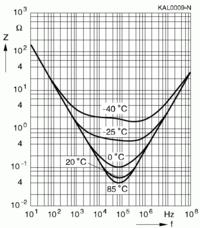manishanand14
Full Member level 4

- Joined
- Sep 3, 2011
- Messages
- 203
- Helped
- 10
- Reputation
- 20
- Reaction score
- 9
- Trophy points
- 1,308
- Location
- Bangalore ,India
- Activity points
- 2,572
Hello Everyone
Please tell me which capacitor has higher ESR: 1000uF/16V or 1000uF/63V and why?
Please tell me which capacitor has higher ESR: 1000uF/16V or 1000uF/63V and why?





